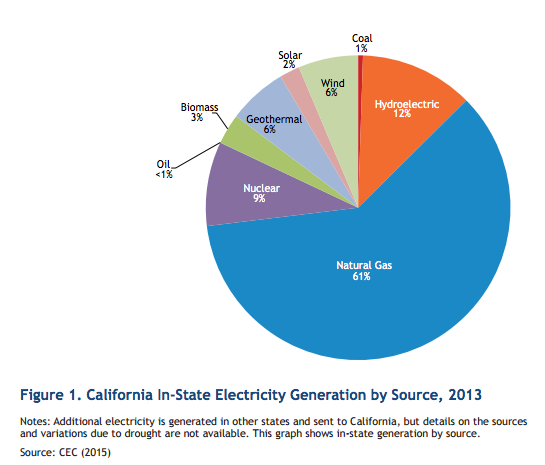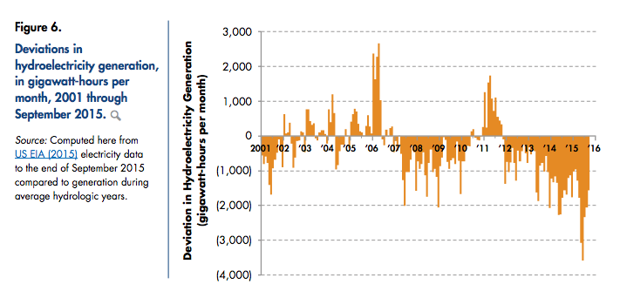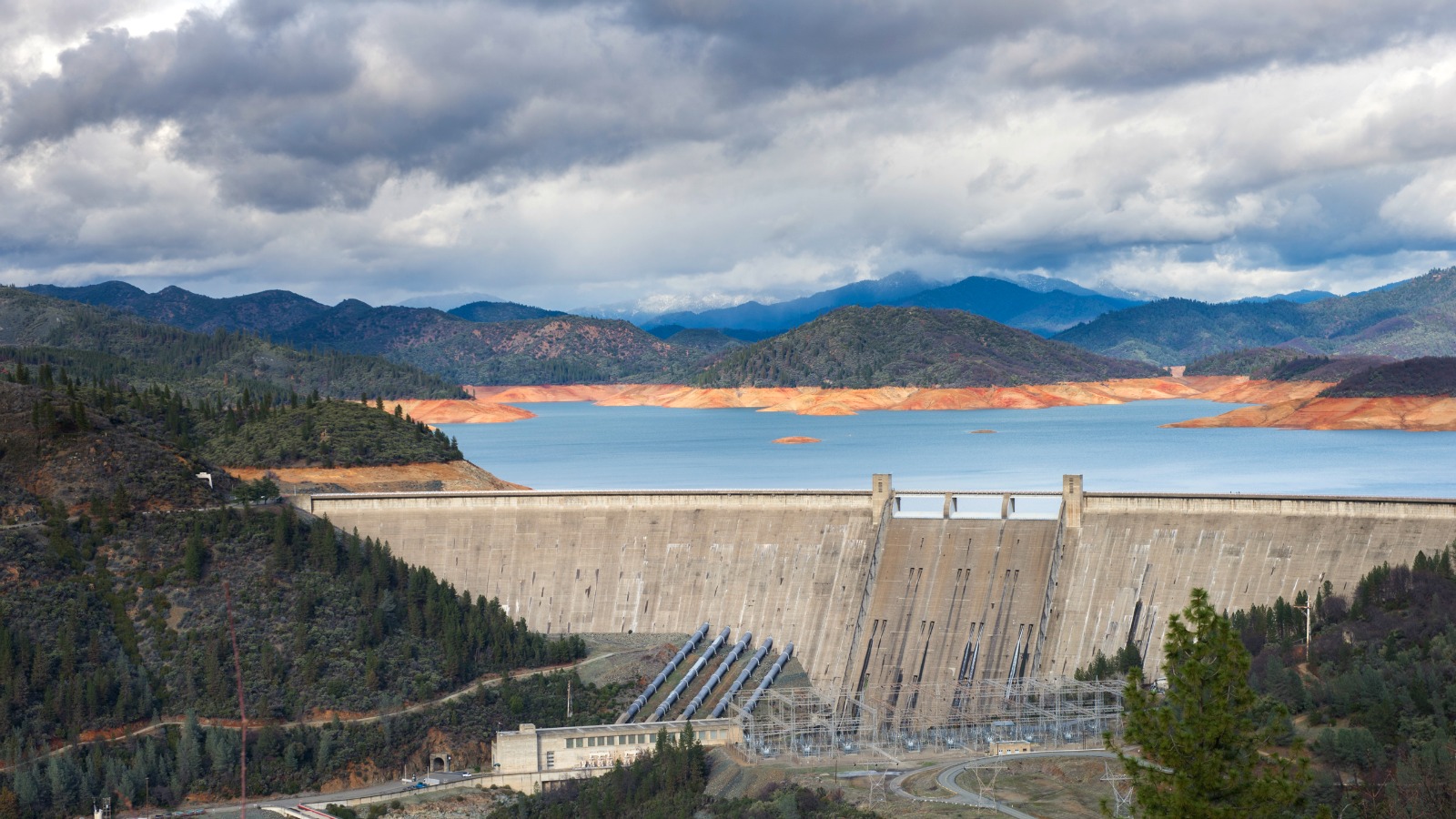This story was originally published by CityLab and is reproduced here as part of the Climate Desk collaboration.
Climate change intensified California’s current drought, and the drought may be intensifying climate change. A new report by the Pacific Institute finds that the state’s energy portfolio has continued to shift away from hydropower and toward dirtier sources of electricity (CityLab covered its 2015 report on the same subject). That’s led to a 10 percent uptick in carbon emissions from California’s power plants, and an extra $2 billion for ratepayers.

Pacific Institute
Between 1983 and 2013, hydropower accounted for an average 18 percent of California’s total electricity production. It has never been a perfect energy source: Environmentalists object to characterizations of it as “renewable,” because of the negative impact on river ecosystems that large dams invariably have. But in terms of its emissions, “hydro” is clean as a whistle, as it doesn’t burn fuel to produce energy as does, for example, natural gas. It’s also considerably cheaper than other forms of energy.
But with the recent drought’s diminishment of river flows and reservoir capacity, the share of hydropower’s electricity production in California has dropped significantly. Between 2011 and 2015, it provided just 10.5 percent of the state’s total electricity. In 2015, a year of record lows for California water, hydropower was particularly scant, accounting for less than 7 percent of total electricity.
How has the state taken up the slack in electricity? Mostly, by burning more natural gas. Natural gas has always accounted for the lion’s share of California’s energy production, and power plants have long been one of its heaviest polluters of nitrous oxides, volatile organic compounds, particulates, and carbon dioxide — the greenhouse gas chiefly responsible for climate change.
By shifting the state’s energy production even more heavily toward natural gas, the Pacific Institute estimates the 2012-2015 drought led to an extra 23 million tons of carbon dioxide being emitted, in addition to larger quantities of other nasty air pollutants. (That doesn’t include accidental leaks associated with the natural gas fuel cycle, however small or astonishingly massive.)

Pacific Institute
A drop in hydropower has also gradually hit California ratepayers. The report pegs the cost of reduced hydroelectricity production between 2012 and 2015 at approximately $2 billion.
Will this year’s healthy El Niño recalibrate California’s water/energy balance? Temporarily, maybe. But longer-term trends in hydropower suggest otherwise: The report shows a decline in hydroelectricity generation over the past 15 years, largely the result of periodic drought conditions. In the West, the next drought is always around the corner. And with climate change turning up the heat, balancing energy needs with hydrology is a problem set to get even more vexing.



